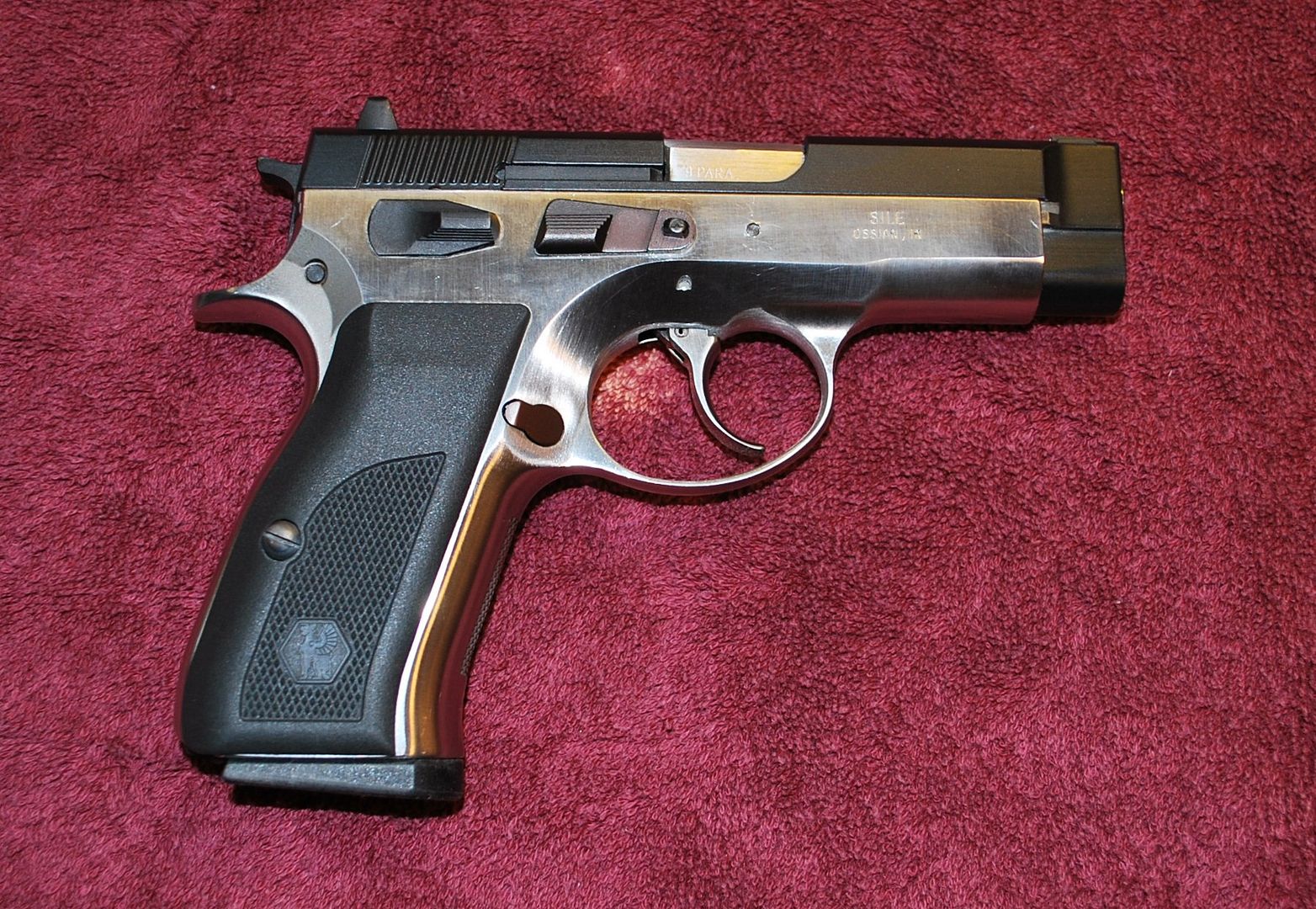Walt Sherrill
New member
Tom Servo said:The barrel/slide lockup and slide stop design are also very similar. The bottom half of the pistol is, of course, a different design.
The slide riding inside the frame is a shared feature -- but that may be the only unique one.
While the CZ does share a similar barrel design, if you look at the ORIGINAL Browning Hi-Power patent drawings (dated 1927), shown below, you'll see that the CZ barrel and recoil system design is far closer to the original Hi-Power design than the Petter/SIG design. If you had to argue that CZ copied an existing slide, barrel, and recoil assembly design, it was arguably the original BHP design they copied, not the Petter/SIG design. See the Browning patent drawings that follow.
The base of the SIG (M49/P-210)guide rod and recoil spring assembly - which uses a full-length guide rod -- stays connected (by the slide stop pin) to both the barrel and the frame as the slide and barrel move to the rear. (I have never seen a diagram of a Petter Model 1935 to know whether that feature was used in the Petter design -- but I suspect it was.) The SIG design, I think, is considered a LINKED system.
František Koucký's CZ design is described as a variation of the LINKLESS Browning design. The most obvious difference is that the base of the CZ guide rod rests against the frame as the slide and barrel move to the rear. (The later HP recoil spring guide rod base is connected to the BHP frame by the slide stop lever, but it does separate from the barrel when cycling. The subsequent centerfire SIGs also don't use lugs on top of the barrel to connect the barrel to the slide; some of the newer CZ designs (CZ-40B, CZ-97, P-07/09) don't either. All of the newer centerfire SIGs and CZs use a linkless design.
The original Hi-Power patent drawing shown was for a single-stack striker-fired gun. The Hi-power went through a lot of changes after Browning died, and it wasn't until some of the COLT patents expired that it took its present form. It may be that the final product was really more a Dieudonné Saive design than a Browning one. Saive was Browning's assistant at FN for years, and later took over the HP project after Browning's death. Saive eventually became FN's head designer. And while there were double-stack mags before he developed one for the FN HP, his was apparently the first to see widespread use.

Last edited:




